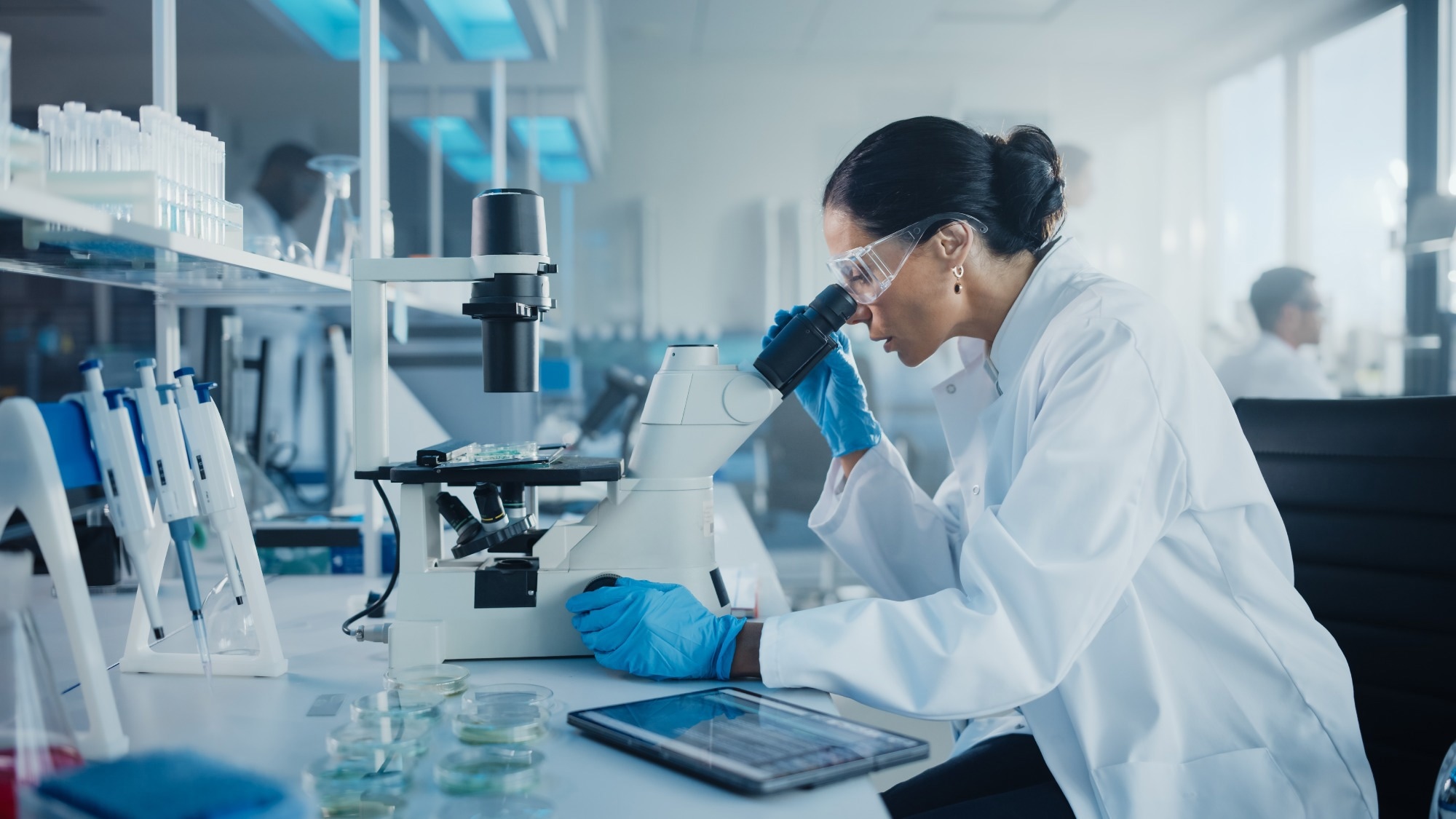In a recent article published in the Science Advances Journal, researchers developed a one-step method to engineer multifunctional M1 phenotype macrophages from specialized membrane-fusogenic liposomes for effective adoptive cell therapy (ACT) against solid tumors.
Specifically, they fused an anti-CD47 (aCD47)–modified lipid shell of anti-phagocytosis-blocking repolarization-resistant membrane-fusogenic liposome (ARMFUL) into the M1 macrophage membrane surface, which simultaneously delivered colony-stimulating factor 1 (CSF-1) receptor inhibitor BLZ945-loaded core into the cytosol.
By blocking CD47, the ARMFUL boosted the macrophage's phagocytosis against the tumor, which enhanced ACT.
 Study: Anti–phagocytosis-blocking repolarization-resistant membrane-fusogenic liposome (ARMFUL) for adoptive cell immunotherapy. Image Credit: Gorodenkoff/Shutterstock.com
Study: Anti–phagocytosis-blocking repolarization-resistant membrane-fusogenic liposome (ARMFUL) for adoptive cell immunotherapy. Image Credit: Gorodenkoff/Shutterstock.com
Background
ACT is a well-recognized cancer treatment involving ex vivo engineering of immune effector cells, including natural killer (NK) cells, T-cells, macrophages, etc., and their reinfusion to identify and eliminate tumor cells.
There have been immense advancements in customizing ACTs; however, these technologies fail against many types of hematologic malignancies (solid tumors) due to their poor efficacy. Perhaps multiple immunological barriers in solid tumors resist the back-fused effector cells.
A pragmatic solution could be endowing effector cells with multiple functionalities by engineering two or more cellular targets. The other challenge, however, is the different spatial distributions of cellular targets in the cell.
Moreover, step-by-step engineering of multifunctional effector cells adds cost and complexity, further hindering their clinical translation.
An unmet need exists for enhanced ACT against tumors using refined synchronous cell engineering of multiple targets at varying subcellular levels within a single process.
Since membrane-fusogenic liposomes mimic the natural membrane fusion process, the researchers hypothesized that these could be an optimal tool for refined cellular engineering for ACT enhancement.
Cell engineering is a conglomerate of diverse bioengineering methodologies that intervene in intercellular/extracellular molecular targets of gene editing, metabolism, drug/protein regulation, and other important functionality endowment processes.
About the study
In the present study, researchers used a three-step process to construct ARMFUL. Next, they constructed bifunctional ARMFUL/M1 macrophages. Further, they evaluated the functionalities of ARMFUL/M1 in vitro. They first tested the anti-M2 polarization capacity of ARMFUL/M1 macrophages.
Next, the team evaluated the phagocytosis ability of engineered ARMFUL/M1 macrophages using fluorescence-activated cell sorting (FACS).
They monitored the phagocytosis process with a live-cell dynamic imaging and analysis system. Furthermore, the researchers tested ARMFUL/M1 macrophages in vivo in a B16F10 melanoma-bearing mouse model.
Results and conclusions
Compared to their non-engineered counterparts, ARMFUL/M1 resisted M2 polarization. Ribonucleic acid (RNA) sequencing analysis of ARMFUL/M1 with/without interleukin-4 (IL-4) treatment resisted M2 polarization by inhibiting colony-stimulating factor 1 receptor (CSF1R).
A gene ontology (GO) enrichment analysis also confirmed that they had enhanced immunological functions.
As expected, ARMFUL/M1 macrophages also showed enhanced tumor phagocytosis ability. Besides excellent anti-M2 polarization and enhanced tumor phagocytosis ability, ARMFUL/M1 macrophages exhibited antigen-presenting capacity (APC), which activates the adaptive arm of immunity against tumors.
In vivo, ARMFUL/M1 retained their M1 phenotype in solid tumors and repolarized aboriginal protumorigenic tumor-associated macrophages (TAMs) toward the M1 phenotype to effectively remodel the tumor microenvironment. Subsequently, they activated the immunity of systemic T cells to inhibit distant tumor progression.
According to the authors, the study developed a membrane fusion–mediated cell engineering technique, which is the first to utilize the membrane fusion effect for cell engineering to construct multifunctional effector cells.
They used ARMFUL, specialized membrane-fusogenic liposomes, to engineer M1 phenotype macrophages with multiple functionalities in a single step for enhancing ACT against solid tumors.
At the same time, ARMFUL simultaneously transported the core payload and a modified lipid shell to the cytosol and cell membrane, respectively.
This spatial distribution refined the efficiency of two engineering drugs, thereby improving the tumor phagocytic ability of macrophages and their anti-M2 polarization capacity.
This makes this approach unique from all existing sole-target engineered cellular therapeutics aimed at one active site target for remolding.
All macrophages armed with ARMFUL had higher antitumor efficacy. With chimeric antigen receptors cell therapy (CAR), they could have many more biomedical applications and be highly clinically useful.
In the future, ARMFUL could be adapted to accommodate other combinations of cell engineering reagents. It would facilitate the development of different types of adaptive effector cells with diverse functionalities, which might turn ARMFUL into a universal platform to personalize cell behaviors/functions for the improved antitumor effect of ACTs.
Likewise, ARMFUL could help remold a larger set of immune effector cells used in ACT, e.g., NK and stem cells. In other words, it is a versatile toolbox for designing personalized and effective cell-based immunotherapies for cancer treatment.